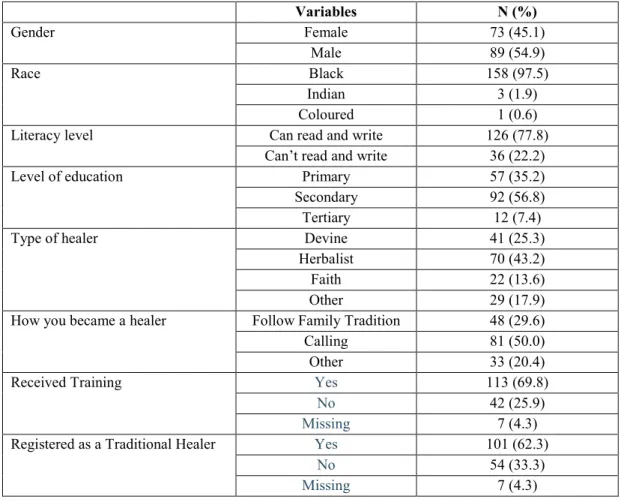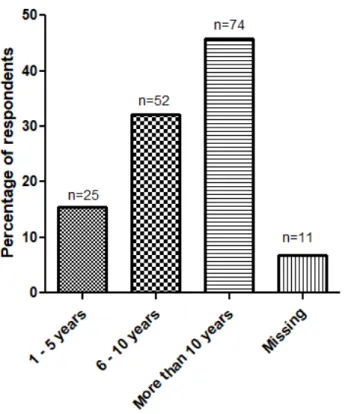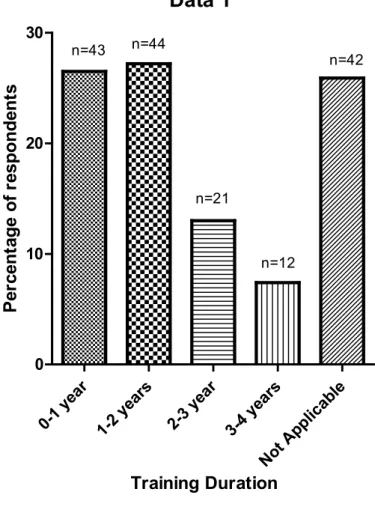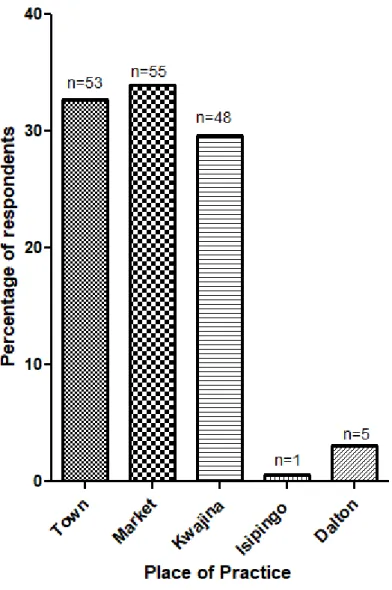Introduction
Aim of the Study
The study aims to investigate the knowledge, attitudes and practices of Durban traditional healers regarding primary eye care.
Objectives of the Study
Find out the knowledge of traditional healers about the most common eye diseases in South Africa, their cause, diagnosis and treatment;. Find out the attitude of traditional healers towards working with modern eye doctors and training.
Research Questions
Literature Review
As a result, in 1977 the WHO formally recognized the importance of collaborating with traditional healers in the delivery of health services (Steinglass, 2002). The Traditional Healers Organization (THO) is the most prominent umbrella organization and was established in 1970 (Treatment Action Campaign & Aids Law Project, 2003). This White Paper abolished the traditional restrictive laws of healing, while recognizing that traditional healers are part of the primary health care team.
Courtright et al., (2000) noted that significant gender differences exist in the activities of male and female traditional healers. Therefore, collaboration between traditional healers and allopathic practitioners is now more urgent than ever before. Different types of traditional healers and their roles were discussed, as well as the definition of primary eye care.
Successful collaborations with eye care professionals and traditional healers in areas such as India, Malawi and Zimbabwe have been demonstrated in the literature.
Research Methodology
- A Quantitative Approach
- Research Setting
- Measurement Instrument
- Sampling
- Data Collection
- Data Analysis
- Ethical Considerations
Before data collection took place, the researcher conducted a training workshop for the field workers to give them a better understanding of the study and how to conduct these interviews using the questionnaire. The research questionnaire was translated into Zulu for the traditional people who did not understand English. All field workers were fluent in Zulu, which allowed for a better understanding of the questionnaire. At the beginning of each interview, the objectives of the study were clarified, as well as any other questions the participant had.
Each participant was informed of the voluntary nature of their participation as well as anonymity, confidentiality and the right to withdraw from the study at any time. Participants were then asked to sign an informed consent form before the start of the interview (Appendix A). Factor analysis was done to determine the validity of the collected data before further analysis.
After the expiration of five years, the data obtained through the research will be removed. Therefore, it was the ethical obligation of the researcher to prevent any harm to the participants during the initiation of the research study. Before starting the interviews, the researcher first sought to obtain informed consent from the participants (Appendix A).
The participants were further informed and assured of the confidentiality of the information they would share with the researcher. Confidentiality and anonymity of the participant were among the ethical requirements that had to be addressed by the researcher. According to De Vos et al. 2002), is confidentiality whereby only the researcher is aware of the identity of participants.
The confidentiality and anonymity of the participants was maintained during the process of reporting the research data. This chapter details the steps taken by the researcher to obtain information, the instruments used in the study setting and the collaboration of traditional healers.
The Results
- Age Distribution
- Participant’s Demographics
- Factor Loading on Knowledge of Traditional Healers with regards to Primary Eye Care
- Descriptive Statistics for Knowledge Categories
- Pearson Correlations Coefficient for the Knowledge Categories
- The difference in the Mean Scores of Knowledge Categories with regards to Literacy Level of
- The difference in the mean scores of knowledge categories with regards to training among
- The difference in the Mean Scores of Knowledge Categories with regards to Duration of Training
- The difference in the Mean Scores of Knowledge Categories with regards to the Registration
- Regression Analysis of Knowledge Categories and Disease Diagnosis
- Factor Loading on Attitude of Traditional Healers to Primary Eye Care
- Descriptive Statistics for Attitude Categories
- Pearson Correlations Coefficient results for the Attitude Categories
- The difference in the Mean Scores of Attitude Categories with regards to Literacy Level of
- The difference in the Mean Scores of Attitude with regards to Training among Traditional
- Factor Loading on Practice of traditional healers with regards to Primary Eye Care
- Descriptive Statistics for Practice Categories
- Pearson Correlations Coefficient results for the Practice Categories
- The difference in the Mean Score of Practice Categories with regards to Literacy Level of
- The difference in the Mean Scores of Practice Category with regards to Training among
- The difference in the Mean Practice scores of respondents with regards to Referral of Patients
The results for the factor analysis and reliability test for traditional healers' knowledge about primary eye care are presented in Table 4.3. There was no significant difference in the knowledge score of educated and uneducated traditional healers regarding the causes of eye disease or injury (p>0.05), as was their knowledge of using glasses for vision correction ( p > 0.05). The knowledge score was significantly higher in the trained group compared to the untrained group of traditional healers on using glasses to correct vision (p<0.05).
There was no statistical difference in traditional healers' knowledge of the causes of eye disease or injury and knowledge of conditions that may result in eye disease or injury, considering the duration of training (p>0.05). The knowledge score was significantly higher in the registered group compared to the unregistered group of traditional healers in terms of their knowledge of the causes of eye disease or injury (p<0.05). There was no significant difference in the knowledge score of registered and unregistered traditional healers about conditions that can result in eye disease or damage (p>0.05).
Factor analysis and reliability test for traditional healers' attitude towards primary eye care are shown in Table 4.11. Relationship with doctors and referral of clients to doctors Referral of patients from doctors to traditional doctors SD = standard deviation. There was no significant difference in the attitude scores of educated and uneducated traditional healers regarding the three categories of attitudes analyzed (p>0.05).
The subgroups of attitude compared to the attitude of traditional healers towards registration are presented in Table 4.16. It was found that there is no significant difference in the attitude score of registered and unregistered traditional healers according to the three analyzed attitude categories (p>0.05). The results of the factor analysis and reliability test for the practice of traditional healers with regard to primary eye care are presented in Table 4.18.
The results presented in Table 4.22 show the respondents' mean practice scores regarding training among traditional healers. There was no significant difference between the mean practice scores of the different categories for training among traditional healers (p>0.05).

Discussion
- Participants Age
- Gender
- Racial Distribution
- Literacy Levels
- Becoming a Healer & Practice
- Factor Loading on Knowledge of TH with regards to PEC
- Descriptive Statistics for Knowledge Categories
- Pearson’s Correlation Coefficient for the different Knowledge Categories
- Difference in the Mean scores of Knowledge Categories with regards to Literacy the level of
- Difference in the Mean scores of Knowledge Categories with regards to Training among
- Difference in the Mean scores of Knowledge Categories with regards to Duration of Training
- Difference in the Mean Scores of Knowledge Categories with regards to the Registration Status
- Regression Analysis of Knowledge Categories and Disease Diagnosis
- Factor Loading on Attitude of Traditional Healers with regards to PEC
- Descriptive Statistics on Attitude Categories
- The difference in the mean scores of Attitude Categories with regards to Literacy the level of
- The difference in the Mean Scores of Attitude with regards to Training among Traditional
- Regression Analysis of Attitude Categories and Mode of Treatment
- Factor Loading on Practice of Traditional Healers with regards to PEC
- Descriptive Statistics for Practise Categories
- Pearson Correlations Coefficient results for the Practice Categories
- The difference in the Mean Score of Practice Categories with regards to Literacy Level of
- The difference in the Mean Practice Scores of Respondents with regards to Training among
- Difference in the Mean Practice Scores of Respondents with regards to Referral of Patients
To carry out factor analysis and reliability test for the knowledge of traditional healers regarding primary eye care, the knowledge questions were divided into three categories. The findings were that there was no significant difference in the knowledge score of literate and non-literate traditional healers about the causes of eye diseases or damage (p>0.05), this was also the case with their knowledge of the use of glasses to correct set. sight (p>0.05). However, there was a significant difference (p<0.05) in the knowledge score of literate SD) and non-literate SD) traditional healers about the eye conditions that can cause eye disease or damage.
Investigating the average knowledge score of traditional healers in relation to receiving training prior to practicing traditional healing. The results showed there was no significant difference in the knowledge score of trained SD) and untrained SD) traditional healers about the causes of eye disease or damage (p>0.05). The training of traditional healers by Western doctors regarding primary eye care produces better knowledge about eye care.
The study examined the average knowledge score of traditional healers in relation to their registration status. The knowledge score was significantly higher in the registered group SD) compared to the unregistered group SD) of traditional healers regarding their knowledge about the causes of eye disease or damage (p<0.05). There was no significant difference in the knowledge score of registered SD) and unregistered traditional healers about conditions that can lead to eye disease or damage (p>0.05).
The knowledge score did not differ significantly between the registered SD) compared to the non-registered group SD) of traditional healers on the use of glasses to correct vision (p>0.05). Therefore, there is a lack of trust in the relationship between Western doctors and traditional healers. The study examined the average attitude score of traditional healers' attitudes in relation to literacy level.
The results showed that there was no significant difference in the attitude score of literate and non-literate traditional healers regarding the three categories of attitudes analyzed (p>0.05). An average practice score of the different practice categories regarding the referral of patients by traditional healers to other traditional healers was calculated.
Major Conclusions and Recommendations
In line with the aim of this study to develop a basic understanding of traditional healer knowledge attitude practices, the study findings show the need for traditional healer training program regarding modern primary eye care for traditional healers in and around Durban. A more complex research study to investigate other traditional healers in other cities throughout South Africa. The sample population in the study may not be representative of all traditional healers in South Africa.
Herbalists, traditional healers and pharmacists: a view of the tuberculosis in Ghana', Socio Brasil de Farmacogica 24, 89–95. Eye care knowledge and practices among Malawian traditional healers and the development of collaborative blindness prevention programs. African cosmology: Beliefs and practices of Black South African traditional healers regarding HIV and AIDS.
Transforming the South African health care system with respect to African traditional healers: The social impacts of inclusion and regulation. Bapedi Traditional Healers in Limpopo Province South Africa: Their Sociocultural Profile and Traditional Healing 44. Old Remedies, New Disease: Involvement of Traditional Healers in Increasing Access to AIDS Care and Prevention in East Africa.
You are invited to consider participating in a study that will include research into knowledge, practice and attitudes of traditional healers regarding primary eye care in Durban. The aim of this research is to learn more about the role of South African traditional healers in eye care services. I, ………., have been informed of the study entitled KNOWLEDGE, PRACTICE AND ATTITUDES OF TRADITIONAL HEALERS REGARDING PRIMARY EYE CARE IN DURBAN) by Mr. TATE CLIFFORD MADLALA.
KNOWLEDGE, ATTITUDE AND PRACTICES OF TRADITIONAL PRACTITIONERS REGARDING PRIMARY EYE CARE IN DURBAN, KZN. Will you participate in training of traditional healers on eye care by western / modern healthcare worker. The title of the study is: Knowledge and perception of traditional healers regarding primary eye care in Durban.
The results of this study will help to establish the knowledge, attitude and practice of traditional healers regarding primary eye care in KwaZulu-Natal.








